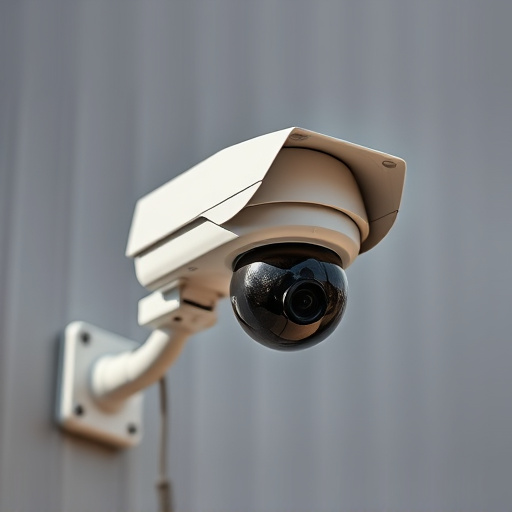The most convincing dummy camera type for security is high-definition, realistic replicas of genuine surveillance equipment, strategically placed in visible areas like entry points, windows, and doors. These cameras mimic real features such as motion-activated LED indicators, enhancing their deterrence effect by conveying constant surveillance. Balancing realism with strategic placement can significantly boost security perception without extensive physical security measures.
In today’s world, where security is paramount, a strategic approach to surveillance can deter crime and boost peace of mind. This article unravels the art of deploying fake security cameras, known as dummy cameras, as an effective deterrent. We explore the psychology behind their placement, guide readers through choosing the most convincing dummy camera type, and offer practical strategies for optimal positioning. By the end, you’ll understand how to enhance security perception with realistic dummy camera deployments.
- Understanding the Psychology Behind Dummy Camera Placement
- Choosing the Most Convincing Dummy Camera Type: A Comprehensive Guide
- Effective Strategies for Positioning Fake Security Cameras
- Boosting Security Perception with Realistic Dummy Camera Deployments
Understanding the Psychology Behind Dummy Camera Placement
Understanding the psychology behind dummy security camera placement is key to an effective strategy. Criminals often look for signs of security before attempting a break-in, and poorly placed cameras can send the wrong message. The most convincing dummy camera type should mimic genuine surveillance equipment in appearance and behavior. Motion-activated models that turn on with subtle LED indicators are highly realistic and deter potential intruders by suggesting constant monitoring.
Placement is crucial; mount them in visible areas like entry points, windows, and doors, where they serve as a powerful psychological deterrent. However, avoid placing them too close to sensors or in locations that could be easily covered, as this would defeat their purpose. Balancing realism with strategic placement ensures maximum impact, making your property appear highly secured without the need for extensive physical security measures.
Choosing the Most Convincing Dummy Camera Type: A Comprehensive Guide
When selecting the most convincing dummy camera type, consider both visual realism and intended purpose. High-definition (HD) models with intricate details and lifelike features offer superior deception, making them ideal for deterring potential intruders. These cameras mimic genuine security equipment, tricking would-be thieves into believing they’re under constant surveillance.
For added authenticity, choose dummy cameras designed to match popular real-world brands. This strategic approach not only enhances the visual impact but also creates a psychological effect, as individuals are more likely to assume an area is secure if it resembles an actual security setup. Ensure the camera’s features align with your needs—motion detection, night vision, or even wireless connectivity—to further bolster its convincing nature.
Effective Strategies for Positioning Fake Security Cameras
When deploying fake security cameras, selecting the most convincing dummy camera type is crucial for achieving realistic effect and deterring potential criminals. High-quality, lifelike models that mimic real cameras with accurate features like LED indicators and lens details are often the best choice. These advanced replicas can be hard to distinguish from genuine security equipment, making them excellent choices for both residential and commercial properties.
Placement is another key strategy. Mounting fake cameras in areas where they have clear lines of sight, such as entry points, windows, and common areas, sends a strong visual message. Additionally, positioning them at heights that align with real camera locations can further enhance realism. Strategically placing these dummy cameras can deter would-be intruders by conveying the presence of 24/7 surveillance, even if they are not actively recording.
Boosting Security Perception with Realistic Dummy Camera Deployments
Boosting Security Perception with Realistic Dummy Camera Deployments
One of the most effective ways to deter crime and enhance security is through strategic placement of dummy security cameras. Among various types available, high-quality realistic dummy cameras stand out as the most convincing option. These replicas mimic the appearance and functionality of genuine surveillance equipment, tricking potential intruders into believing they are under constant observation. By deploying these dummy cameras in visible areas, such as entry points, parking lots, and common areas, businesses and homes can significantly deter criminal activity.
The strategic use of realistic dummy cameras not only provides a psychological deterrent but also serves as a visual reminder of the property’s security measures. Their lifelike appearance and movement simulations create an atmosphere of heightened awareness, encouraging would-be perpetrators to reconsider their actions. This strategy is particularly useful in areas with a history of crime or where valuable assets are located, offering an additional layer of protection without the need for extensive and costly real camera installations.
In the realm of security, fake security camera placement strategies offer a robust, yet subtle, defense. By understanding psychological triggers and choosing the most convincing dummy camera type, as detailed in this guide, you can significantly enhance security perception without breaking the bank. Effective positioning and realistic deployments make these cameras an indispensable tool for fostering safety in any environment. Remember that the right strategic placement of fake security cameras can be a game-changer, providing a sense of security while deterring potential threats.
